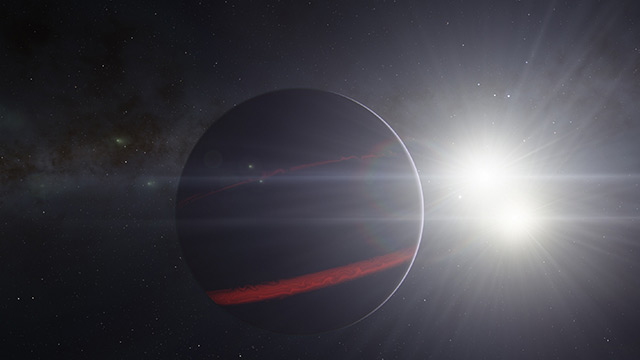 Parler
Parler Gab
Gab
- Astronomers discovered a hidden gas giant up to 10 times Jupiter’s size in a young star’s protoplanetary disc, challenging previous assumptions.
- The star MP Mus, 280 light-years away, initially appeared featureless until advanced telescopes revealed gravitational disturbances.
- Combining ALMA and Gaia data confirmed the planet, marking the first indirect Gaia detection of an exoplanet in a protoplanetary disc.
- Longer ALMA wavelengths exposed hidden structures, while Gaia detected the star’s wobble, proving the planet’s existence.
- The discovery suggests many young planets may remain hidden, requiring multi-method approaches to uncover them.
A deceptive cosmic veil
At first glance, MP Mus seemed unremarkable. Observations in 2023 using ALMA’s shorter wavelengths showed a flat, seemingly empty disc, devoid of the telltale gaps or rings that typically signal planet formation. "Our earlier observations showed a boring, flat disc," Ribas admitted. "But this seemed odd to us, since the disc is between seven and ten million years old. In a disc of that age, we would expect to see some evidence of planet formation." The lack of visible structures puzzled researchers. Protoplanetary discs, the birthplaces of planets, usually exhibit grooves and cavities as young worlds carve paths through the dust and gas. Yet MP Mus’s disc appeared untouched—until scientists looked deeper.Peering through the fog
Determined to solve the mystery, Ribas and his team revisited MP Mus using ALMA’s longer 3mm wavelengths, which penetrate deeper into the disc’s obscuring layers. This time, the data revealed hidden structures: a cavity near the star and two distant gaps—clear signs of gravitational disturbances. "Using the longer ALMA wavelengths allowed us to see structures we couldn’t see before," Ribas said. Meanwhile, independent data from Gaia added another critical piece to the puzzle. Miguel Vioque, a researcher at the European Southern Observatory, noticed MP Mus was "wobbling"—a subtle motion suggesting an unseen planetary companion was tugging on the star. "My first reaction was that I must have made a mistake in my calculations," Vioque admitted. But when Ribas shared his findings of the newly discovered cavity, the connection became undeniable.A giant in hiding
Combining ALMA’s disc observations with Gaia’s stellar motion data, the team concluded that a gas giant—between three and ten times Jupiter’s mass—was orbiting MP Mus at a distance of one to three times Earth’s distance from the Sun. "Our modelling work showed that if you put a giant planet inside the newfound cavity, you can also explain the Gaia signal," Ribas explained. This discovery is monumental for two reasons. First, it proves that young planets can remain hidden even in well-studied systems, obscured by their own formative debris. Second, it validates a new detection method: pairing Gaia’s precise star-tracking with ALMA’s deep disc imaging.Implications for the search for alien worlds
The findings, published in Nature Astronomy, suggest that many more hidden planets could be waiting in protoplanetary discs across the galaxy. "We think this might be one of the reasons why it’s hard to detect young planets," Ribas noted. "In this case, we needed the ALMA and Gaia data together." Future upgrades to ALMA and next-generation telescopes like the ngVLA (next-generation Very Large Array) could unveil a hidden population of young exoplanets, shedding light on how solar systems—including our own—form. If a planet this massive escaped detection until now, what else might be lurking in the cosmic shadows? The discovery of this colossal exoplanet is a triumph of persistence and technological ingenuity. It exposes the limitations of relying on a single observational method and underscores the need for multidisciplinary approaches in astronomy. As scientists refine these techniques, the hunt for young planets will accelerate, potentially rewriting our understanding of planetary birth and evolution. Sources for this article include: ScienceDaily.com Space.com Cam.ac.ukEPA slashes workforce by 23%, dismantles research arm amid restructuring
By Belle Carter // Share
Mediterranean diet slashes risk of vision loss by up to 34 percent, study finds
By Ava Grace // Share
An asteroid’s ripple: How a cosmic strike reshaped the Grand Canyon
By Willow Tohi // Share
Governments continue to obscure COVID-19 vaccine data amid rising concerns over excess deaths
By patricklewis // Share
Tech giant Microsoft backs EXTINCTION with its support of carbon capture programs
By ramontomeydw // Share
Germany to resume arms exports to Israel despite repeated ceasefire violations
By isabelle // Share










